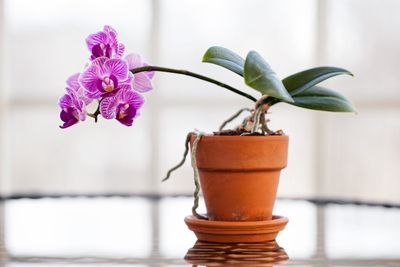How to Fix Orchid Leaf Drop
Before you can treat any problems, you’ll need an idea on the possible reasons for dropping orchid leaves. These are the most common causes: Improper watering: If orchid leaves are floppy and turning yellow, your plant may not be receiving enough water. Different types of orchids have different water requirements. For example, moth orchids need more water than Cattleyas. As a general rule of thumb, water when the growing medium feels dry to the touch. Water deeply until water runs through the drainage hole. Water at the soil level and avoid wetting the leaves. If possible, use rainwater. Improper fertilization: Dropping orchid leaves may be a sign of potassium deficiency or improper fertilization. Feed orchids regularly, using a granular or liquid fertilizer formulated specifically for orchids. Don’t use standard houseplant fertilizer. Always water the orchid first and avoid applying fertilizer to dry soil. Follow the manufacturer’s recommendations closely, especially if the directions suggest a dilute solution, because over-feeding can produce a weak, spindly plant and may scorch the roots. Be sure to feed less during the winter months. Keep in mind that too little fertilizer is always better than too much. Fungal or bacterial diseases: If your orchid is dropping leaves, the plant may be afflicted by a fungal or bacterial disease. Fungal crown rot is a common orchid disease that begins with a slight discoloration at the base of the leaves. Bacterial diseases, such as bacterial soft spot or bacterial brown spot, are evidenced by soft, watery-looking lesions on the leaves. Diseases can spread quickly. To prevent dropping orchid leaves due to disease, remove affected leaves as soon as possible, using a sterile knife or razor blade. Move your orchid to a location where it benefits from improved air circulation and temperatures between 65 and 80 degrees F. (18-26 C.). Apply a broad spectrum fungicide or bactericide according to manufacturer’s recommendations.
